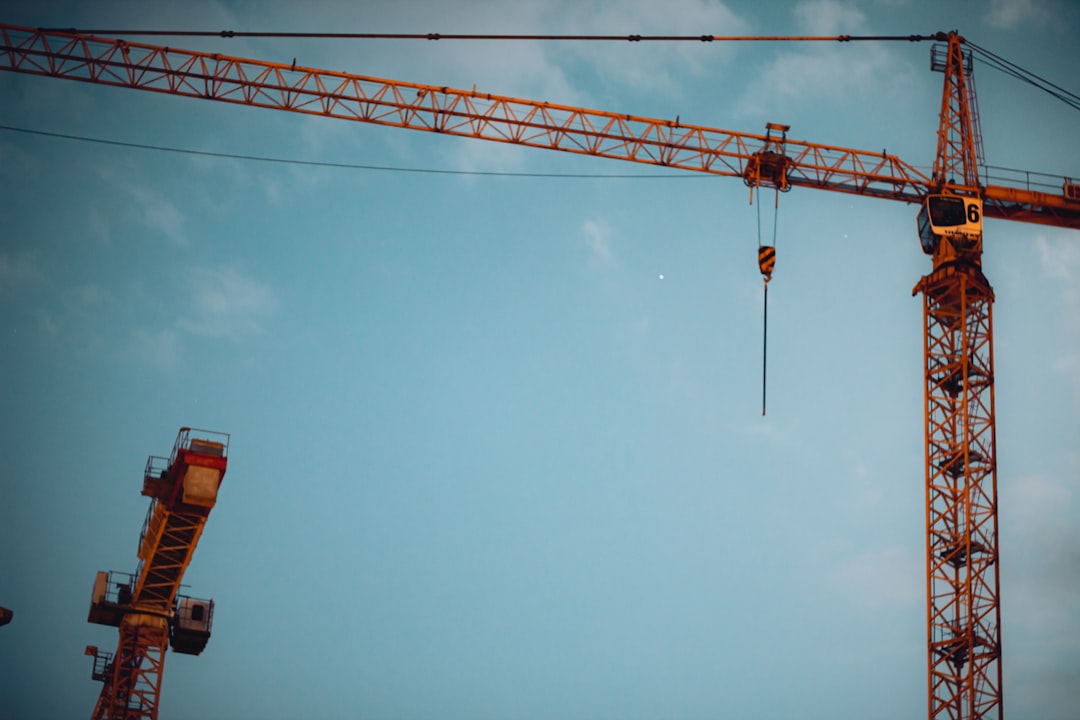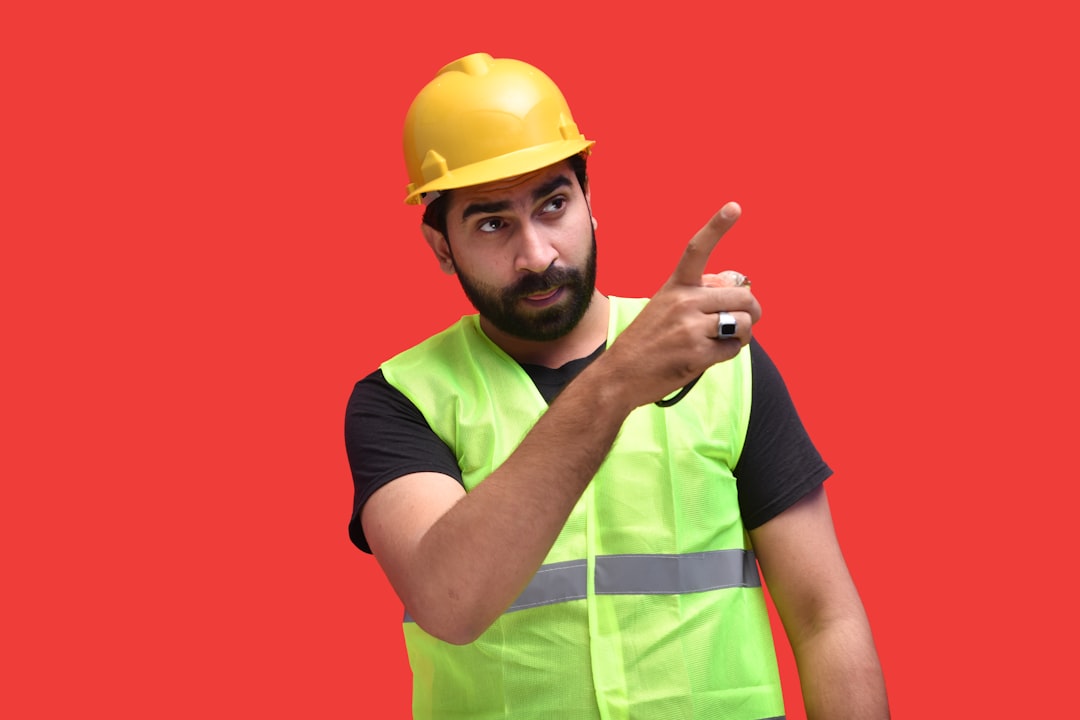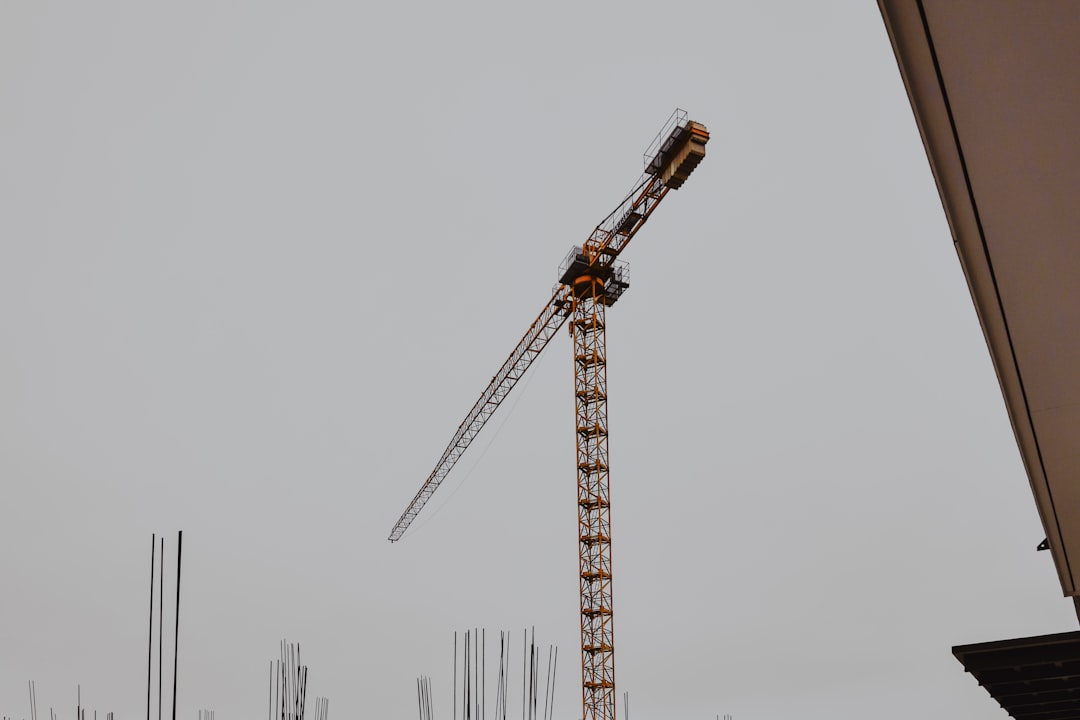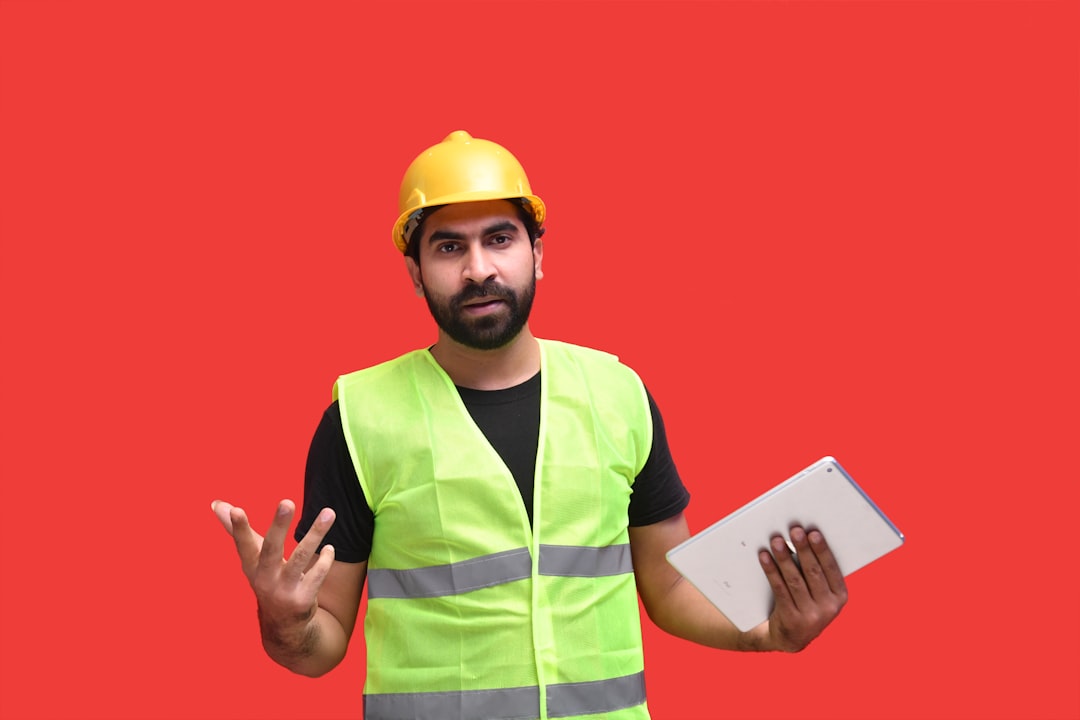

Engage prospects with a scan and streamline customer engagement with FREE QR code marketing tools by Sona – no strings attached!
Create a Free QR CodeFree consultation

No commitment

Engage prospects with a scan and streamline customer engagement with FREE QR code marketing tools by Sona – no strings attached!
Create a Free QR CodeFree consultation

No commitment
Blasting contractors operate in a highly competitive and safety-critical environment where every field interaction can make or break a relationship. Many teams still rely on analog processes like binders of safety procedures, printed project proposals, and static signage that cannot capture intent or trigger immediate next steps. The result is a persistent gap between offline interest and online engagement, which slows follow-up, obscures lead quality, and leaves valuable prospects untracked.
QR codes in marketing bridge this offline to online divide by linking any physical asset to an immediate, measurable digital action. Whether applied to equipment rental tags, containment fence banners, or proposal packets, QR codes put job details, safety documents, and service requests one scan away from action. They also record useful context about each interaction, giving contractors the opportunity to identify high-intent accounts, improve safety adherence, and accelerate sales conversations.
Adopting QR codes in blasting work yields benefits across the business: streamlined compliance access, modernized lead capture, coordinated operations, and data-backed marketing. In the sections that follow, you will learn how to design, deploy, and track QR programs that connect jobsites with your CRM, improve crew and client experiences, and convert more moments of interest into opportunities with Sona QR.

Blasting contractors often struggle to convert field visibility into meaningful engagement because analog touchpoints rarely provide a clear path to action. Binders with outdated safety forms, tri-fold brochures, and business cards might inform, yet they do not capture who engaged or what they wanted. When manual logging is required, data entry errors and delays further undermine follow-up. QR codes reverse these friction points by letting crews, inspectors, and clients take the next step instantly while automatically routing the data to the right place.
A connected access strategy starts with mapping common offline interactions to digital destinations that save time: a site banner that opens an always-current safety packet, an equipment tag that jumps to the machine’s onboarding checklist, or a proposal cover that triggers a pre-filled walkthrough request. As these scans accumulate, you gain insight into which jobsites, assets, and accounts are showing intent. You also reduce operational risk, since the latest compliance documents are always one scan away, not buried in email threads or outdated binders.
Advanced platforms like Sona QR now let contractors set up automatic workflows tied to each scan. A plant engineer who scans for safety sheets can receive a follow-up checklist by email within minutes, while a GC who scans a proposal QR can be flagged for same-day outreach by a business development rep. Over time, this orchestration transforms field engagement into predictable pipeline growth.

Blasting projects often span complex environments where stakeholders vary widely: facility managers, EHS inspectors, GC project managers, municipal procurement teams, and on-site crews. Many of these stakeholders interact with your brand in physical spaces first. Without an easy bridge to digital content and forms, a large share of that interest remains invisible. QR codes are the shortest path from awareness to action, enabling visitors to raise a hand without typing a URL or picking up a phone, as shown in contractor best practices.
Speed is crucial in blasting work. Schedules change rapidly, safety documents update frequently, and cost or scope clarifications can arrive at any hour. Dynamic QR codes let you change the destination without reprinting, which is especially important for compliance packets and job-specific documentation that evolve as the project progresses.
For materials common to blasting work, the benefits are immediate. Instead of sending a 20-page PDF with outdated specs, a QR on the proposal cover can route a facility manager to the latest scope and cleaning standard references. Instead of handing a business card after a pre-bid walk, a QR on your high-visibility vest can save your contact details with one scan, reducing fat-fingered entries and lost opportunities.
QR codes are flexible. Selecting the right format for each scenario ensures scanners land on content that fits their context. In blasting, the most useful formats tend to support contact exchange, documentation access, safety communication, and simple logging.
With dynamic codes, you gain agility. If an updated SDS is released or containment requirements change mid-project, you can adjust the destination instantly through a platform like Sona QR. You can also A/B test landing pages to see whether a compliance hub or a shorter checklist performs better for specific roles.

Growth begins where your offline audience already interacts with your brand. For blasting contractors, that means jobsites, equipment, proposals, vehicles, and industry media. Deployed thoughtfully, QR codes turn each of these into a measurable channel while also improving customer experience.
Distribute unique QR codes by placement and campaign to attribute results accurately. Over time, you will learn which surfaces drive the most qualified requests, which assets attract safety-driven scans, and which environments deliver best-in-class conversion. This visibility lets you concentrate budgets where returns are measurable and repeatable. For inspiration, see this 900 signups case study.

Successful QR programs anchor to specific, high-value workflows. In blasting, the strongest use cases balance safety, speed, and client transparency while generating measurable signals for sales and operations. Deployed well, they shorten cycles and reduce rework.
Each of these use cases can feed a clean data pipeline. With Sona QR, scans enrich contact or account records in your CRM, enabling segment-specific nurture, speedier follow-up, and efficient prioritization for business development teams.
Every scan is a meaningful signal. It captures an action, a location, a time window, and often a role. By deploying multiple QR codes across the buyer journey, blasting contractors can segment audiences automatically and tailor follow-up that aligns with the scanner’s intent and context.
Start by mapping the journey stages to distinct QR interactions. Awareness-level codes might live on vehicle wraps and print ads and route to service overview pages. Consideration codes sit on proposals and case studies and route to galleries or spec sheets. Conversion codes appear on pricing sheets, change order pages, or scheduling tools. Each scan adds a contact to a segment that speaks to where they are in their decision process. For field-ready ideas, see contractor QR tips.
With Sona QR, these segments are created automatically and enriched over time. That lets your team retarget scanners with precision, allocate sales resources effectively, and coordinate messaging across email, ads, and direct outreach. For advanced tactics, use intent-driven retargeting.
QR codes unify channels by connecting the physical world to your digital engine. Instead of guessing which brochure or banner worked, you can attribute interactions to specific placements and tailor follow-up in real time. For blasting contractors, this means every print or field asset can become a performance channel.
QR codes serve as an offline on-ramp to your broader marketing strategy. Centralize all codes in Sona QR, monitor performance across channels, and sync scan data to your CRM. The result is a connected journey where the field informs digital, digital informs the field, and both work together to drive measurable growth.
The pace and complexity of blasting work leave little room for sloppy execution. A clear, repeatable process ensures your QR campaigns capture intent, route data correctly, and deliver continuous improvement. Use the following steps to plan and launch with confidence, then refine based on real-world performance. For inspiration by channel, browse the use case library.
Start by aligning internal stakeholders. Safety, operations, sales, and marketing each touch QR code outcomes, and their input improves placement, messaging, and follow-up alignment. Decide how you will measure success beyond scans, such as completed forms, scheduled walkthroughs, or safety acknowledgments.
Set one primary objective so your creative, placement, and follow-up can be focused. Common objectives include digitized safety protocols, new project inquiries, change order intake, or compliance document access. For example, if your goal is to accelerate pre-bid qualification, your QR should route to a pre-filled scope form with fields for substrate, surface condition, access constraints, and timeline.
Choose static codes for destinations that never change, such as a corporate website or a long-lived PDF. Select dynamic codes for anything that benefits from updates, tracking, and attribution. Most campaign use cases in blasting benefit from dynamic codes.
Design matters. Use high contrast, a proper quiet zone, and a size appropriate for the scanning distance. Add a clear frame and a benefit-driven call to action like Scan for current safety packet or Scan to schedule a walkthrough. Incorporate brand colors and a logo sparingly to maintain legibility.
Place codes where your audience already looks and pauses. For jobsites, that may be gate signage, trailer doors, and equipment controls. For business development, proposals, business cards, and direct mail commonly outperform digital-only outreach.
Launch is the beginning, not the end. Monitor scan volume, conversion rate, and downstream metrics like appointments scheduled and proposals issued. Look for patterns by location, role, and time of day to uncover opportunities.
A disciplined checklist backed by technology helps contractors avoid missed handoffs and underperforming placements. Over time, this approach compounds into a reliable engine for lead capture, safety adherence, and operational coordination.

One of the biggest historical frustrations for blasting teams has been the lack of clarity between field engagement and actual revenue. You could deploy a hundred brochures and ten banners and still be unsure which asset moved a buyer forward. QR analytics solve this by turning each scan into a data point that can be connected to outcomes like form fills, meetings, and closed business. See how to measure offline touchpoints with offline attribution.
Effective tracking requires consistency and context. Tag every QR destination with UTM parameters, standardize naming conventions by jobsite and asset, and unify data in a single platform. When paired with identity resolution at the account level, you can attribute influence to specific placements and determine which scans contributed to pipeline milestones. This lets you defend budgets and double down on assets that perform. Strengthen your model selection with single vs multi-touch.
The result is a clear line from the field to the forecast. Sona QR captures real-world engagement, and Sona.com turns it into insights your team can act on. When you connect scans to revenue, QR codes become a dependable part of your performance marketing and operations toolkit.
Sustained success with QR codes depends on operational discipline and continuous learning. The same principles you apply on site to improve safety and efficiency apply here: standardize, measure, iterate, and train. The tips below emphasize placements and tools common in blasting.
As you refine your approach, publish simple internal guides for QR placement, design, and landing page standards. This lowers the activation energy for new campaigns and helps every department contribute to a consistent, measurable customer experience.
QR codes are more than quick links. For blasting contractors, they are the connective tissue between field operations and digital systems, turning every physical surface into a potential entry point for engagement and every moment of curiosity into a measurable action. When paired with disciplined planning and modern analytics, QR codes help teams capture demand at the source, deliver current safety content, and coordinate follow-up with speed and precision.
By centralizing code creation and tracking in Sona QR and connecting engagement to revenue with Sona.com, blasting contractors can replace guesswork with insight. The payoff is a safer, more responsive client experience and a pipeline shaped by real behavior rather than assumptions. If you are ready to modernize how your field assets drive growth, start by generating your first dynamic codes, place them where they will be seen, and let the data guide your next move. Start creating QR codes for free.
QR codes have transformed the blasting contractors industry by turning complex access management and safety compliance into seamless, trackable processes. Whether it’s streamlining site entry, ensuring up-to-date documentation is always available, or enhancing communication between teams, QR codes replace cumbersome manual checks with instant, mobile-friendly verification that boosts operational efficiency and safety.
Imagine having real-time visibility into who accessed which blasting site and when, all while minimizing delays and compliance risks. With Sona QR, you can create dynamic, trackable QR codes in seconds, update access permissions instantly without reprinting, and connect every scan directly to your project management and safety systems. No more guesswork, no missed updates—just smarter, safer, and more efficient blasting operations.
Start for free with Sona QR today and turn every scan into a secure access point, a compliance check, or a critical data insight that drives your next successful project.
QR codes streamline compliance access, modernize lead capture, coordinate operations, improve safety adherence, and accelerate sales conversations by linking physical assets to immediate digital actions.
QR codes enable instant access to job details, safety documents, and service requests, capturing high-intent interactions and converting anonymous visits into identifiable leads for faster, more relevant follow-up.
Best practices include mapping offline interactions to digital destinations, using dynamic QR codes for updatable content, placing unique codes by role and location, designing for scannability, and integrating scan data with CRMs for targeted follow-up.
Choose a blasting contractor who prioritizes safety compliance, uses modern tools like QR codes for documentation and communication, demonstrates transparent proof of work, and maintains clear, measurable engagement with clients.
Blasting contractors should provide up-to-date safety protocols accessible via QR codes, ensure crews and inspectors have instant access to JHAs, MSDSs, containment plans, and site orientations, and track safety document acknowledgments to target refreshers.
Use Sona QR's trackable codes to improve customer acquisition and engagement today.
Create Your FREE Trackable QR Code in SecondsJoin results-focused teams combining Sona Platform automation with advanced Google Ads strategies to scale lead generation

Connect your existing CRM

Free Account Enrichment

No setup fees
No commitment required

Free consultation

Get a custom Google Ads roadmap for your business






Launch campaigns that generate qualified leads in 30 days or less.
